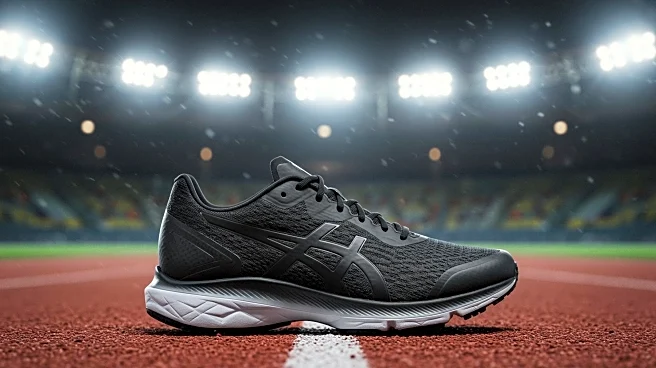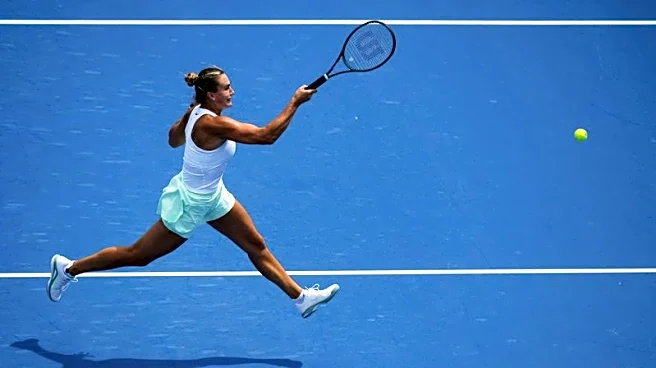What's Happening?
Emma Maria Mazzenga, a 92-year-old sprinter from Padua, Italy, continues to defy age-related expectations with her remarkable athletic performance. Mazzenga holds four age-group world records and recently broke the outdoor 200-meter world record for women over 90. Her physical fitness is being studied by scientists in Italy and the U.S., who have found that her muscle cells function similarly to those of a healthy 20-year-old. Despite normal age-related muscle loss, Mazzenga's slow-twitch muscle fibers, associated with endurance, resemble those of a much younger individual. Her cardiovascular fitness and muscle mitochondria are also well-preserved, contributing to her ability to compete at an elite level.
Why It's Important?
Mazzenga's case provides valuable insights into the potential for maintaining physical fitness and health well into advanced age. Her ability to perform at such a high level challenges common perceptions about aging and physical decline. The research on her muscles could lead to a better understanding of how to preserve muscle function and overall health in older adults. This has implications for public health, as it suggests that consistent physical activity can significantly mitigate the effects of aging. Mazzenga's story also serves as an inspiration, demonstrating that age does not necessarily limit one's ability to engage in competitive sports.
What's Next?
Researchers plan to continue studying Mazzenga's muscle and overall physical condition, with further experiments in the pipeline to gain a comprehensive understanding of her unique physiology. Mazzenga herself is preparing for upcoming competitions, including races in Catania, Italy, and plans to undergo additional testing at the University of Pavia. The findings from these studies may contribute to developing strategies for promoting healthy aging and physical activity among older populations.
Beyond the Headlines
Mazzenga's story highlights the importance of lifestyle choices in aging. Her consistent training and active lifestyle have likely played a significant role in her exceptional physical condition. This underscores the potential benefits of regular exercise and a balanced diet in maintaining health and vitality as one ages. Her case also raises questions about the role of genetics versus lifestyle in aging, offering a unique perspective on how individuals can influence their own aging process.













